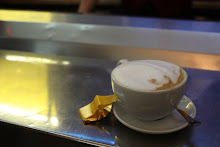

Lab 1: check!
NOW I finally feel in tune with this anatomy class. While in lecture I feel like I'm trying to learn by seeing shadows on a screen, the Lab is refreshingly hands on and personal--I felt like Alice stepping through the looking glass* by actually getting to touch, examine, and question my surroundings instead of simply passively accepting the image fed to me in class. *(disclaimer! I have not read Alice and the Looking Glass, although I'm assuming she steps through some sort of mirror into some crazy world if good ole Disney has taught me anything!)
Last Wednesday I walked into lab and, diverting my eyes away from the back of the room where two stretchers covered by sheets waited (cadavers that we will be investigating this week!) I walked straight to my lab bench and sat amidst boxes and boxes of bones. Some were stringed together in order, other were jumbled up randomly, a few were color coded (most were not) and all of them were real bone-a-fide human bones! (sorry for the cheesy pun :)
Looking into a box of the crazy beige colored shapes, I couldn't help but be reminded of the first time I saw written Greek; sure I knew it was a language, I knew the letters pieced together to words, and I knew the words could be read to make sense, but I still had no idea how to understand any of it! It just looked like jumbled symbols. Same with these bones: "yes, that is definitely a rib, and this a skull, but what are all of THOSE? vertebrae!? so THAT's what they look like! What's that shell thing doing here?" But just as the vague similarity between some Greek letters and Latin letters allows basic words like the names of gods or places to be legible, the analagous shape and structure of the many bones to the assembled skeleton started to make the seemingly random vertebrae pieces much less random.
Par example, I've got no idea who the gods are on the right but I'm pretty sure that the one on the left is labeled "Dionysus"

At one point I picked up two vertebrae to see how these crazy shapes could fit together and voila! like two puzzle pieces they slid one into the other in beautiful alignment (luckily I had chosen two thoracic vertebrae, so this actually worked!). Yes, it was starting to make sense, slowly the foreign was becoming familiar. As I worked through the lab book and looked for different characteristics of the bones, I started to see the subtleties while learning the anatomical language. Among other discoveries, apparently foramen is the cool way to say "hole"
similarly...
process = bulge
fossa = pit (its Latin for trench! thank you wikipedia :)
facet = where another bone will meet/touch
articulate = same as facet (except it will move)?
and then there are the words that thankfully define themselves (angle, groove, arch)

Sorry to bore with the anatomy lingo, it just seemed so cool that I could sound very knowlegable and point out the "vertebral foramen" aka "little holes in the piece of backbone." Although it is probably a good thing the anatomical terminology is there, my discriptions are too long to say over and over again!
So after examining drawing and piecing together the many different bones I soon enough realized that I was running short on time and there was a WHOLE lot more to do. All the microscopes were still sitting with the histology slides (histology = "study of tissues" in Greek! basically microscopic slices of everything from skin to the eyelid of a monkey). It was deja vu all over again except the random vertebral bones were now pink and purple blobs under the microscope. "Ah! there they are! the stratified columnar cells! oh wait, those aren't cells? ahh... I'm looking at the connective tissue apparently, gotcha...." VERY slowly the histology slides started to make sense, although I must admit handling human bones is a little cooler than hunching over a microscope.
So, to recap, a few cool realizations...
Biological Puns!
Form and function!
Everything from the "little holes in the vertebrae" to the random bump seems to have a function for some nerve, muscle, or other bone--it's really incredible how the body which seems so random (looking at pieces of skeleton) can make perfect functional sens
 e. Now just to figure it all out.
e. Now just to figure it all out.The skull...
is beautiful! So that's why cheekbones have that shape, why the nose varies, why the brow can create the deep set eyes... Drawing the skull really proves the beauty of the human face. So many bones fused almost seamlessly together into one undulating recognizable form.
The most incredible thing about the skull is that it seems to be one solid form with, okay, the jaw bone is probably seperate, but really how many bones can there be? Granted they are all fused together*, but there's an impressive total of 8 cranial bones and 14 facial bones of every crazy shape and size!
*so apparently the Hyoid bone is NOT fused to the skull, which is why its usually lost, but it is nevertheless the important base for tongue muscles. another anatomical fact you didn't want to know!!!
anyway. enough of my musings. now to do some reading for the NEW lab tomorrow, where we'll aparently dive (not literally....too soon?) into cadaver dissections! Yay!? Nervous and excited?
ciao tutti! until next time!

Nicole, that first sketch of the two skulls is amazing, it is so beautiful, really...you should put it up, or just give me a copy and I will put it up. Your are truly very talented.
ReplyDelete